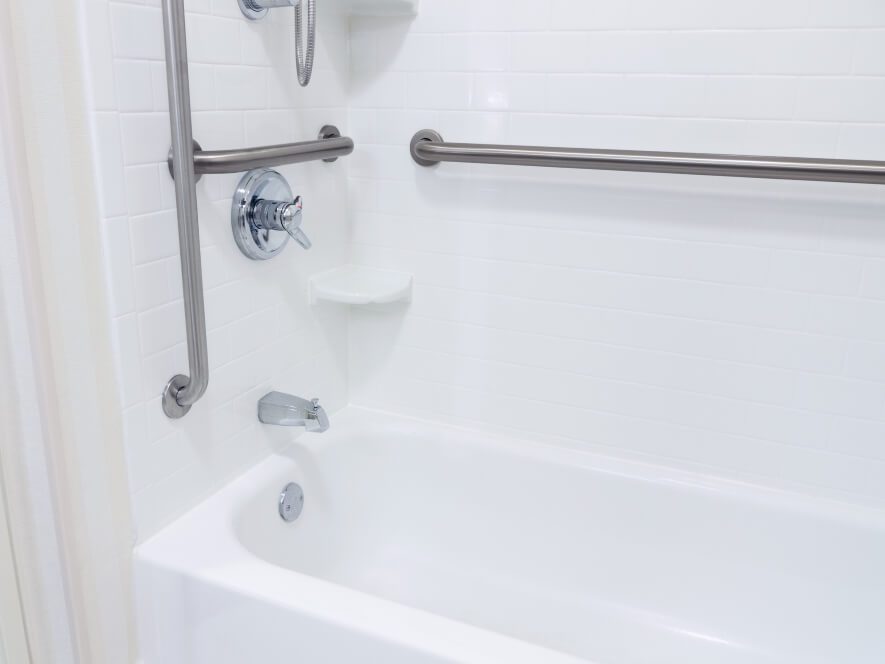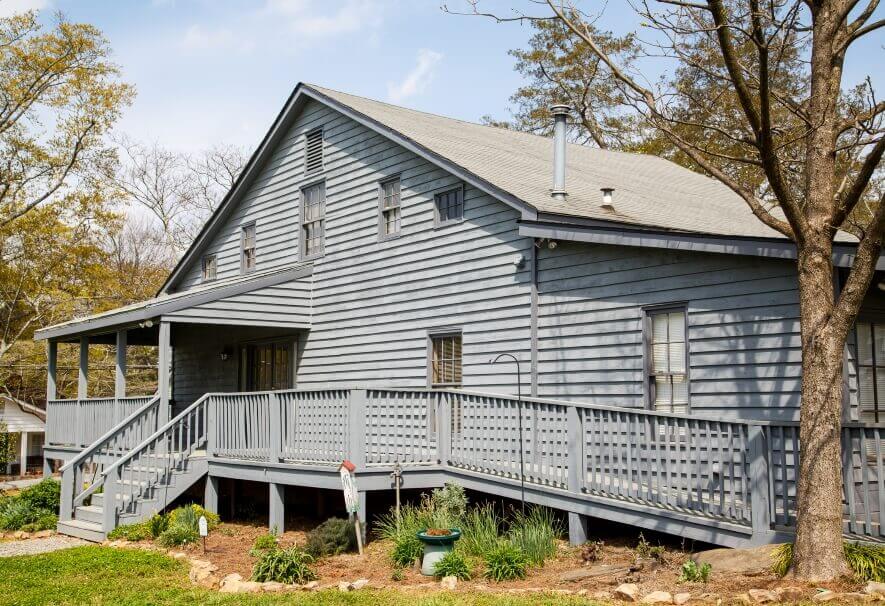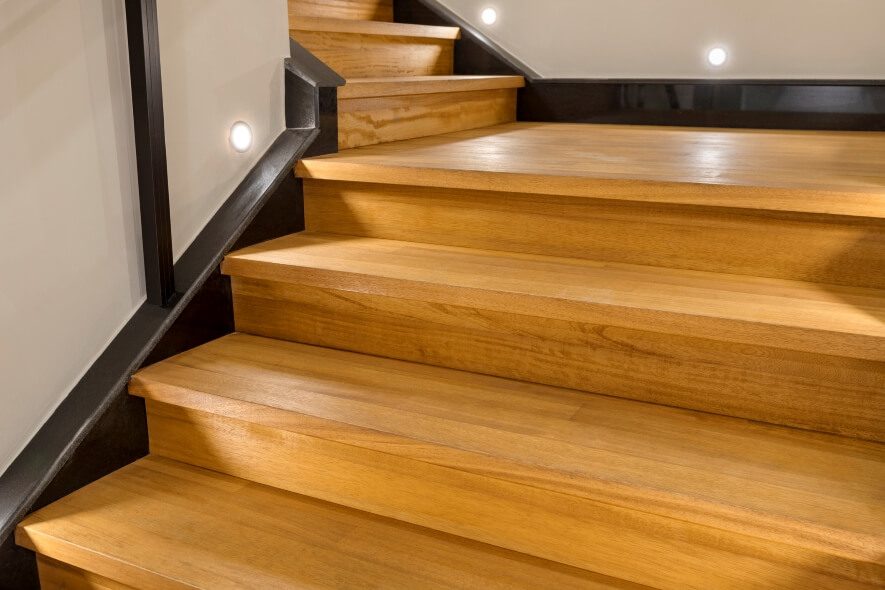Would you rather spend the next 20 years living in your own home, or opt for a different home setting like an active adult community or assisted living?
Seventy-seven percent of Americans over 50 want to stay in their homes for the long haul, according to a recent AARP report. But aging in place usually requires making a few changes and upgrades to your home to suit your needs as the years go by.
Whether you’re concerned about your own long-term living situation or making plans for a loved one, it’s important to start preparing sooner rather than later.
Here are a few things to consider.
Decide if Aging in Place is Right for You
“Aging in place” refers to living independently in your home as you get older, rather than downsizing or moving to a senior community.
Some people prefer staying in their own homes. After all, your home may hold precious memories of happy times. Maybe it’s near your friends and family, your health services, and the clubs and activities you love participating in.
For some people, aging in place is also the right financial choice. This could be the case if the costs of maintaining your home and lifestyle (plus the potential costs of renovations and at-home care) are less than the cost to sell your home and move.
How to Start Planning to Stay in Your Home
Although most Americans say they don’t want to move homes as they get older, recent research suggests they’re not prepared to age in place.
According to findings from the 2022 National Poll on Healthy Aging, 88% of respondents between ages 50 and 80 said it was important to them to remain in their homes. Yet 47% said they’d given little to no thought as to how to adapt their homes to their needs for aging in place.
It’s important to start thinking now about any adjustments or changes that could be required to safely and comfortably stay in your home. This includes looking over the home’s indoor and outdoor spaces to identify what needs to be removed, added or modified to provide a safe, comfortable and functional space that meets your changing needs over time.
Also, consider your physical health and abilities. While most of us remain healthy and active as we age, we may still experience changes in strength, flexibility, balance and reach. Existing or emerging health issues, such as heart disease, diabetes or mobility issues, could one day require at-home medical care. In addition, budget for renovations and updates to create a supportive and easy-to-use environment.
Home Upgrades for Aging in Place
Some home updates for aging in place might require hiring a contractor for repairs and renovations. Other upgrades are simple purchases or DIY projects.
Consider incorporating universal design, an approach to making living environments more comfortable, functional and easy to use for people of any age, size or ability.
Here’s a list of common home improvements and renovations for aging in place.
Bathroom Safety
- Adding grab bars in bathrooms near toilets, showers, and tubs
- Installing step-in bathtubs and showers
- Adding benches in bathtubs and showers
- Replacing low toilets with higher “comfort height” toilets
- Adding non-skid rugs to slippery tiled areas, such as the entrance, kitchen and bathrooms
- Adding non-slip strips to bathtubs and stairs
- Having a main floor bathroom and bedroom in your home

Front Hall Fixes
- Adding a bench and a brighter light to your foyer so you can see what you’re doing when you sit to put your shoes on
- Introducing smart home devices like voice-activated heating and cooling controls and doorbell cameras with accompanying phone apps for home security
- Widening doorways to accommodate walkers or wheelchairs
- Adding no-step entries and/or ramps to the exterior entrances of your home

Home Interior
- Increase lighting throughout the house, particularly where safety hazards exist, such as overhead in the bathtub and shower and stairways
- Replacing round door knobs with easy-to-grasp lever-handled door knobs
- Installing motion-activated night lights in bedrooms, hallways and bathrooms
- Turn fixed shelving into pull-outs
- Eliminate room-to-room thresholds so there is no tripping hazard

It’s also important to consider lifestyle options and modifications that could help you stay comfortable and connected as you age, like installing high-speed internet.
What about personal care, housework and yardwork? As you age, you might need at-home senior care for assistance with daily tasks such as personal care, cleaning, mowing the lawn and shoveling snow.
It’s also a good idea to learn which stores in your area offer home delivery. You might eventually prefer to get groceries and medications delivered rather than driving to the supermarket or pharmacy. Or perhaps you’d like to try a meal prep service and forego making meals from scratch.
Whatever your preference, start your research now before you need these services.
Where to Find More Information
Does your home require more extensive renovations to prepare for aging in place? Look into grants and resources to help you renovate and upgrade your home.
The U.S. Department of Housing and Urban Development’s Older Adult Home Modification Program funds non-profit organizations nationwide. These organizations help adult homeowners aged 62 and above retrofit their homes to remain in place as they age.
You can also visit USAging.org or AgeinPlace.org for other aging in place services available in your area.
Visit The Hartford’s Center for Mature Market Excellence for resources on how to make your house a home for a lifetime. AARP has a couple of useful tools as well. The AARP Homefit Guide is a free resource to help make homes more comfortable for older adults. And AARP Here to Stay is a Resource from the AARP Foundation and The Hartford that features home maintenance and safety solutions, including an interactive home assessment tool and a directory of local resources for finding help with needs ranging from repairs to reducing utility bills and other home costs.
In today’s world, aging in place is a viable option for those who want to remain independent. The right home upgrades and assistance can make staying in your home safe and comfortable. But it’s important to research and plan ahead of time to ensure you have access to the resources and services you may need as you age.
By taking steps to upgrade your home and finding the right support for everyday tasks, you’ll be better prepared to remain in your own home for years to come.
What’s the number one change or improvement you would need to make in order to stay in your home for the long run? Tell us in the comments.







Themostimportantwouldbe Heating and Air
senior centers may offer solutions, recommendations
I would like my bath faucets fixed and my kitchen. My stairs outside are a danger for me they are to steep. I can’t tell you how many times I have almost fallen. They at times are just to much with my cancer .
Build a ramp from the back door into the driveway. I already have pain in my knees and sometimes in my hip.
Great article but wondering why there is no mention of stairlifts, vertical platform lifts, residential elevators, lift chairs, pool lifts and similar devices which go a long way toward helping thousands of seniors to age in place and enjoy their home with minimal construction modifications.
101 mobility is a nationwide company offering quality solutions such as this to help seniors and those with diabilities to age in place.
Railing or grab bar on garage entrance. Door bell that rings
1st Floor level bedroom and bathoom
No changes needed to stay in my own house. I would however like to change location and move to a more urban
big city area so that i dont get bored in my rural location
We need to add non-slip strips under our rugs at entry, in front of kitchen sink, and in bathrooms. Add grab bars to the shower and around the toilet. Everything else is pretty much ready to go.
80 Plus, would like to have address of close by, organization that in case need for assistance , cleaning , general maintenan etc
of big house.
A stair lift chair would make all the difference in the world!
Hello can I get a quote on car insurance from you? Bundle with our homeowners insurance. We live in Florida and have one car. Thanks
Hi Scott – Please give us a call at 888-546-9099 and one of our customer service representatives would be happy to provide you with a quote. Thanks for reading Extra Mile!
Adding bathroom on main level. We might will have to add ramp to the main entrance.
Interesting info. Don’t know if I can find help that’s not costly.
Converting the south facing deck to a screened in porch.
Upstairs laundry
Walk-in shower with wide/deep seat.
I need a ramp off my back porch
A level door entry from garage and ramp in garage leading to door. sliding
A very good article! Multiple issues to think about. Thank you. Cheryl
I believe what I need help with most is lawn services. I live on a corner lot. I am 77 years old and have front lawn, side lawn, and back yard to upkeep. This is too much for me to do. Seeking a service to do it has not worked well for me. I am usually taken advantage of in addition to not ever enjoying a fully manicured yard.
My second #1 is to one day have a walk in tub. I long for a bath to sit and soak my often aching body. Unfortunately my bone on bone knees does not afford me the luxury of doing this in a regular tub. I simply cannot manage to get up and out of the tub without slipping or hurting my knees.
Most needed for us to stay in our home: sufficient main-floor storage space for groceries, household materials like paper towels, TP that now is stored in the basement. Sifficient main-floor clothing storage for the changing seasons;;;livng in a climate with severe weather changes means need for more clothes. Now, store seasonals in attic and basement, and have to rearrange 2X/year which means “stairs.”
1. Grab bars in the bathtub.
2. Handrail on house entranceway steps.
There is an item that you could add to your Aging n place article and that is the use of the Reverse Mortgage provisions to either use funds available through that program to modify their home to meet their needs for being older or to actually use the Reverse Mortgage to have a new home constructed with all the amenities needed. I know because I had my home built using it and I am very satisfied.
What I need is to have a laundry room on my main floor and not in the basement, because I have a hard time going up and down the stairs to wash clothes due to breathing problems and painful knees!
Thanks for the upgrade in aging. I am reaching 87 and my family and I never thought of upgrading our homes to fit our needs. It is apparent as we grow older our immediate needs grow newer. Thanks again for the advice. Family meeting coming up.
We just finished building a home. We’ve incorporated most of your suggestions. I appreciate the article and find it reassuring and informative.
I’d like to know more about economical in home elevators, cost and considerations. As well as stair lifts compared to elevators.
Thanks for the reminder. Although our home is relatively new it wasn’t designed for older (84+) adults. A suggestion is as follows:
If there are smaller bath and or powder rooms consider modifying the entry doors to swing out rather than in. If a person falls and can’t get up; help can get to them more easily.
The number one change I need is the bathroom and washer/dryer area. I would like to enlarge the bathroom into the bedroom next to it and have an area for washing and drying. Not quite sure how to do it but know it will be an expensive project. Also need to have easies access to the house as steps are becoming hard to navigate.
A walk in shower.
One major change because of two spinal surgeries that meant my moving or staying was moving the laundry from the basement to the little ‘bedroom’ now also computer/desk room. Turned small closet into stacked bins for sorting dirty laundry as it accumulates. Front loading washer means I can sit in my rolling desk chair right in front of the side by side machines and load and unload without hurting my back. I can sort and fold the clean clothes on top of the machines either sitting or standing or take them into the other bedroom and fold and sort on the bed. No more hauling baskets of laundry up the stairs. 20 years ago it cost me $1500 for the 2 machines and $1500 for the plumber. Well worth it.
Stairs are an issue
Thank you for sharing this information. It is excellent. I have done almost everything you recommended and hope it helps other people, too.
Have all three bedrooms upstairs. Hope I can continue to use them. I’m 75.
Correcting thresholds from one room to another, tripping hazards.
What would I recommend to upgrade as recommended? To win the lottery!
Who of us could afford to do most of these things?
We (my wife and I) remodeled our home back in the late 90’s when I was in my mid 50’s. I was not thinking about getting old, but made changes because it made sense.
We changed every doorway in the house to 36 inches and replaced every hinged room door to pocket doors as well as replacing all closet doors with sliding doors, This made for easy entry and exit, made the rooms appear more spacious and made moving furniture in and out of the rooms a breeze.
We Installed ADA compliant toilets, a Jacuzzi tub in one bathroom, a walk-in shower with seats in the other bathroom as well as ADA compliant grab bars of which I used many.
We had a long 36 inch wide hallway which I increased to 41 inches and this made it feel less restricted.
We are not Carpenters, Plumbers or Electricians, just an adept pair of do-it-yourselfers. These are just the main changes which were made, but were made because we gave it much thought.
I’m 88 years old and live alone (with two dogs). Great suggestions, but who’s going to pay for all that stuff?
In order to stay in our home comfortable we will need a ramp to our front door for my husband
A way to get to terrace level from main level.
I will eventually need assistance with daily care.
With 3 acres, mowing, landscaping, fruit trees pruned. Would not want the ranch to look abandoned due to neglect.